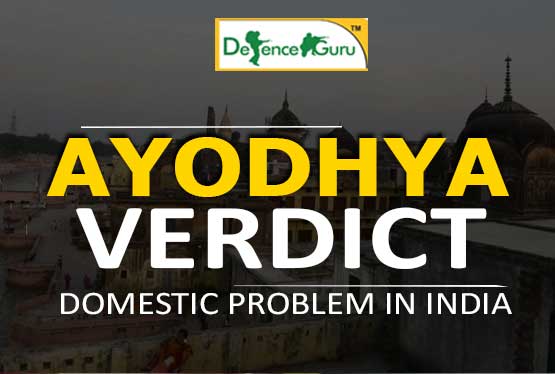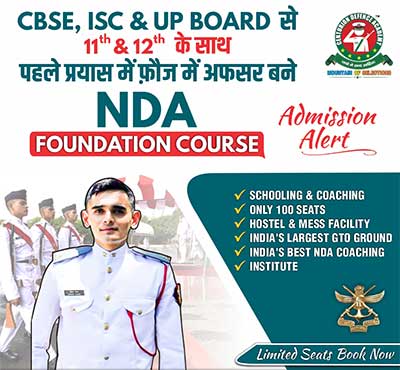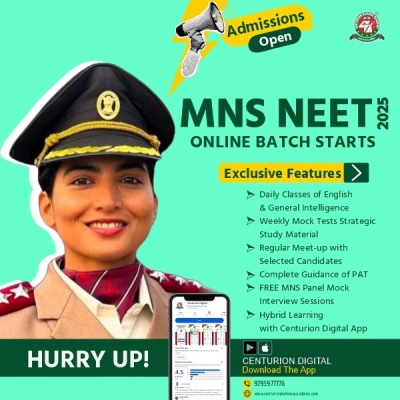Ayodhya Case Verdict
How Babri Masjid-Ram Janmabhoomi Case Reached Its Final Stage Since Its Inception
The Supreme Court today delivered a historic landmark judgment Seventy years after the first court case was filed relating the disputed land of 1,500 square yards of Babri Masjid-Ram Janambhoomi title suit. As per "unanimous verdict" delivered today by chief justice of India, along with , a five-judge constitution bench stated that the disputed land will be given to a government-run trust for building a temple and Muslims will be given a five-acre "suitable" plot in Ayodhya.
The disputed Ram Temple – Babri Mosque site has been a sentimental issue for more than a century and has dominated the country's political discourse for decades after siphoning numerous court battles has finally been abdicated.
Here is a timeline of events important from the point of view of exam relating to the Ram Temple - Babri Masjid dispute.
- 1. The Babri Masjid was built in Ayodhya in 1528 by one of the generals, Mir Baqi, of first Mughal emperor of India, Babur. However the Hindu groups claim it was built after demolishing a temple. This led to the first ever communal dispute in 1853 over the site. Later in around 1859, the British administration, to maintain peace and order put a fence around the site which marks the separate areas of worship for Hindus and Muslims, and this arrangement worked for nearly 90 years. However in 1949 when the idols Lord Ram were placed inside the mosque the dispute went to court.
- 2. Later in the 1984 a hindu group Vishwa Hindu Parishad (VHP) formed a committee to liberate the birth place of Lord Ram to spearhead the construction of a Ram temple. In 1986 Muslims also formed Barbi Mosque Action Committee after the district judges ordered to open the gates of mosque and allowed Hindus to worship inside the "disputed structure."
- 3. In 1989, foundations of a temple were laid on land adjacent to the "disputed structure".
- 4. In 1990, the then BJP president LK Advani took out a cross-country rath yatra to garner support to build a Ram temple at the site Members from the VHP demolished the mosque partially. The then Prime Minister Chandra Shekhar failed to resolve the issue through negotiations.
- 5. On December 6, 1992, communal violence broke after the mosque was demolished by VHP supporters, the Shiv Sena and the BJP. More than 2000 people died in the Communal riots across India
- 6. In April 2002 the Lucknow bench of Allahabad High Court of three judges begun hearings of the case.
- 7. In Jan 2003 the Archeologists started a court-ordered survey to find out if a Ram Temple existed on the site. In august 2003 The survey found out the evidence of temple beneath the mosque, however, Muslim groups argued with the findings and in September 2003 A court ruling charged seven Hindu leaders and said they should stand trial in Babri Mosque demolition case.But no charges were brought against Mr Advani who was then the Deputy Prime Minister. A year later, an Uttar Pradesh court ruled that the order which exonerated him should be reviewed.
- 8. The case against the BJP leaders, including Murli Manohar Joshi and Uma Bharti as well, is being heard by a trial court in Lucknow. In July this year, the Supreme Court extended the tenure of the judge hearing the case and set a nine-month deadline for the verdict.
- 9. In April 2010, a 3-judge Lucknow bench of the Allahabad High Court began hearings on determining who owned the site. In September 2010, the Allahabad High Court pronounced the verdict. The verdict said the site of Babri mosque is to be divided into three parts, each going to Nirmohi Akhara, Ram Lalla and the Sunni Central Waqf Board of Uttar Pradesh. Within months, Hindu groups and Muslim groups moved Supreme Court challenging the High Court verdict.
- 10. In 2011, the Supreme Court stayed the Allahabad High Court order. Not long before, the top court had said the Allahabad High Court verdict was strange and surprising.
- 11. After mediation proceedings by a Supreme Court-appointed three-member team failed to find an amicable solution to the dispute earlier this year, a five-judge constitution bench began day-to-day hearings on August 6.
- 12. The daily hearings at the Supreme Court came to an end after 40 days on October 16. The verdict was reserved and set to be declared before November 17, when Chief Justice Ranjan Gogoi, who is leading the five-judge constitution bench hearing the case, is slated to retire.
- 13. Finally after the decades of court battles a ‘UNANIMUS VERDICT’ is pronounced by the supreme court today which is considered as historic and epic 1045 pages long judgment as it is second largest judgment after the Kesavananda Bharati v. State of Kerala and Anr. (case citation: AIR 1973 SC 1461) which took 68 days in the supreme court.
- 14. As per verdict:
- a) The bench, also comprising Justices SA Bobde, DY Chandrachud, Ashok Bhushan and S Abdul Nazeer, has granted the entire 2.77 acre of disputed land in Ayodhya to deity Ram Lall
- b) Supreme Court has directed the Centre and Uttar Pradesh government to allot an alternative 5 acre land to the Muslims at a prominent place to build a mosque.
- c) The SC has dismised the suit filed by Nirmohi Akhara seeking control of entire disputed land, saying they are the custodian of the land. However, the court has asked the Centre to consider granting some kind of representation to Nirmohi Akhara in setting up of trust. Nirmohi Akhara was the third party in the Ayodhya dispute.
- d) Supreme Court has directed the Union government to set up a trust in 3 months for the construction of the Ram mandir at the disputed site where Babri Masjid was demolished in 1992.
- e) The Supreme Court said the underlying structure below the disputed site at Ayodhya was not an Islamic structure, but the ASI has not established whether a temple was demolished to build a mosque and furthersaid that terming the archeological evidence as merely an opinion would be a great disservice to the Archaeological Survey of India.
- f) The court also said that the Hindus consider the disputed site as the birthplace of Lord Ram while the Muslims also say the same about the Babri Masjid site.
- g) The court also said that the faith of the Hindus that Lord Ram was born at the disputed site where the Babri Masjid once stood cannot be disputed. The bench said the existence of Sita Rasoi, Ram Chabutra and Bhandar grih are the testimony of the religious fact of the place.
- h) The apex court said however that the title cannot be established on the ground of faith and belief and they are only indicators for deciding the dispute.
- i) The Supreme Court also said that the 1992 demolition of the 16th century Babri Masjid mosque was a violation of law.
- j) While reading out its judgment, the Supreme Court said that the UP Sunni Central Waqf Board has failed to establish its case in Ayodhya dispute case and Hindus have established their case that they were in possession of outer courtyard of the disputed site.
- k) The apex court said the extensive nature of Hindus worshipping at outer courtyard at the disputed site has been there, and the evidence suggests the Muslims offered Friday prayers at mosque which indicates that they had not lost possession of the site.
- l) It said that despite obstruction caused in offering prayers at Mosque, the evidences suggest that there was no abandonment in offering prayers.






